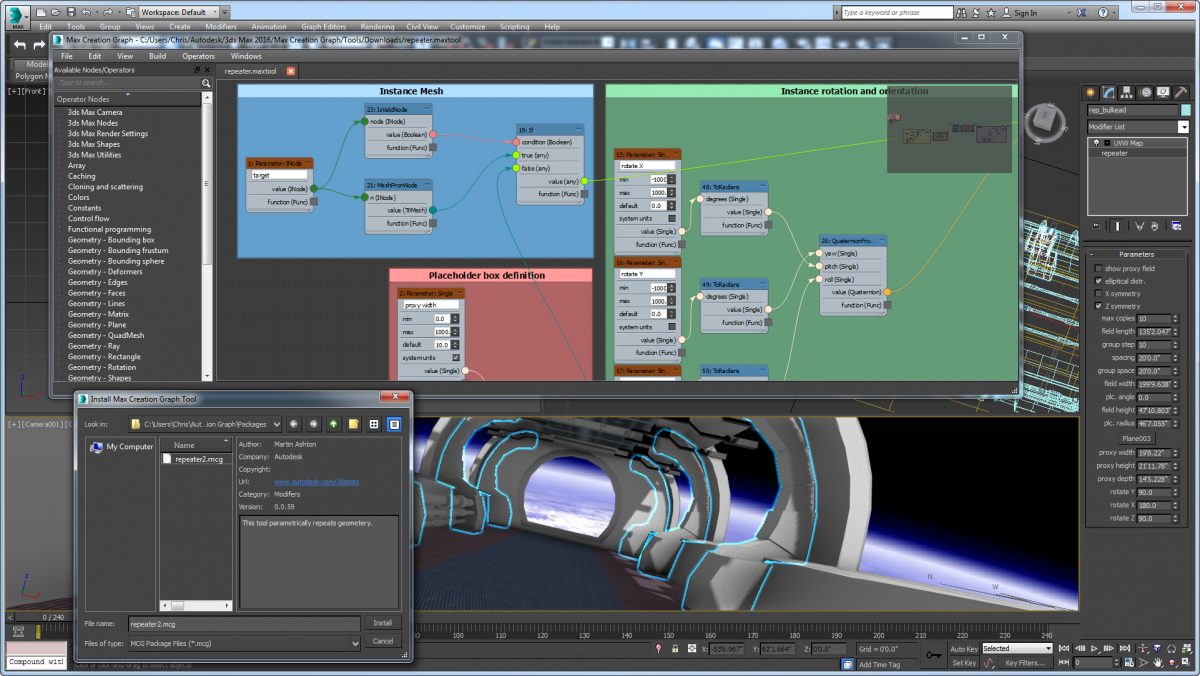

Changes made in the source file will automatically be inherited in their local scene.” The XRef system for referencing objects from other 3ds Max scenes has also been updated, improving stability and adding support for “non-destructive animation workflow”, as shown in the video above.Īccording to 3ds Max product manager Eddie Perlberg, a referenced character could be “running in one file, jogging in another. The graphs themselves can be packaged for export and shared with other Max users, opening up the possibility for many more users to create and distribute their own custom tools.

Instead, the set of available operator nodes seems to be primarily geometry-related, with the examples shown in the video covering the creation of procedural geometry and scattering objects across a surface.

“With creation graphs, any artist can look at a tool, open it up … and rewire it,” says Diggins.ĭespite the obvious similarities, MCG isn’t an implementation of Softimage’s ICE visual programming toolset within 3ds Max: an issue discussed by Diggins in a blog post on Autodesk’s AREA community site. Instead, MCG enables users to create their own custom tools by wiring together operator nodes.
#3DS MAX 2016 FEATURES SOFTWARE#
In the promo video above, senior software developer Christopher Diggins describes MCG as a “very bold” alternative to traditional “black box” modifiers. Top of the list of new features in 3ds Max 2016 is the Max Creation Graph (MCG): a new node-based environment for content creation and tools programming, intended to be accessible to less technical artists.
#3DS MAX 2016 FEATURES UPDATE#
Autodesk has unveiled 3ds Max 2016, the latest update to its industry-standard modelling, animation and rendering software, at NAB 2015, alongside new versions of Maya, Mudbox, MotionBuilder and Flame.ĭespite a lack of pre-release hype, 3ds Max 2016 looks to be one of the strongest updates in recent years, adding a new node-based tool-creation system, a new physical camera, and Alembic and OpenSubdiv support.


 0 kommentar(er)
0 kommentar(er)
